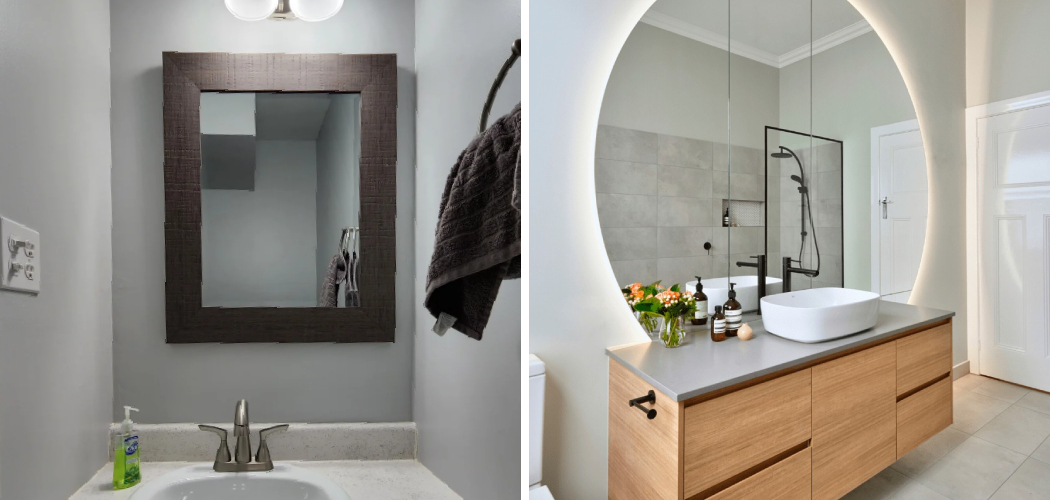When it comes to bathroom design, the placement of the mirror plays a crucial role in aesthetics and functionality. A well-positioned mirror can enhance the sense of space, improve lighting, and offer practicality for daily grooming tasks. However, positioning a mirror with an offset sink presents unique challenges. Offset sinks not centered on the vanity or wall can create visual imbalance and complicate the mirror’s alignment with existing fixtures.
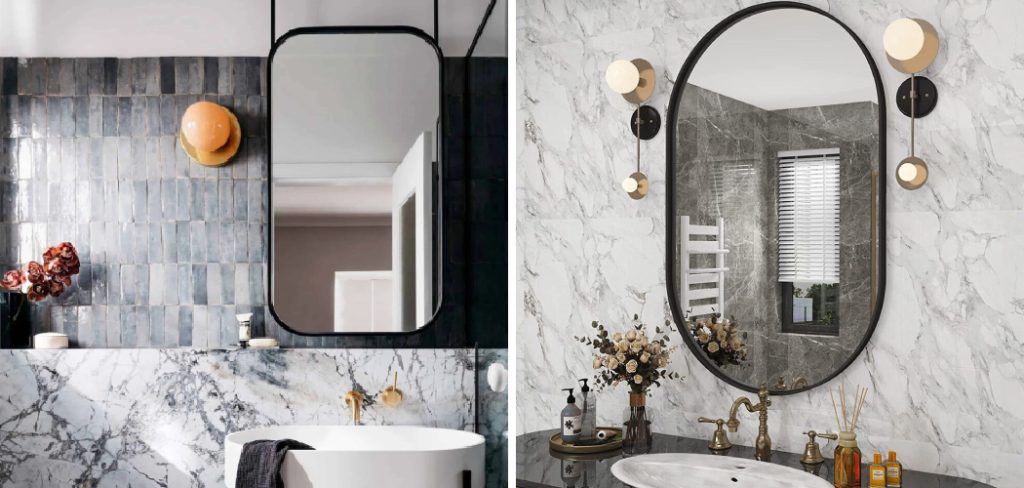
In this guide, we will explore how to position bathroom mirror with offset sink configurations, focusing on key considerations such as wall space, proportion, and design harmony. We will also discuss various solutions to maintain your bathroom’s visual appeal and operational effectiveness. Whether you center the mirror, align it with the sink, or use multiple mirrors, understanding these strategies will help you achieve a balanced and functional bathroom design.
Assessing the Bathroom Layout
Understanding the Offset Sink Layout
An offset sink is a sink that is positioned towards one side of the vanity rather than being centered. This layout choice is often made to maximize counter space or fit within unique bathroom configurations that do not allow for a centrally located sink. Offset sinks are commonly used in small bathrooms to create a more usable surface area on the vanity, providing extra space for toiletries and other essentials.
The placement of an offset sink can significantly impact the position of the mirror above it. In bathrooms with offset sinks, the common layout scenarios include having the sink aligned to the left or right of the vanity or even diagonally positioned. Each of these layouts brings its own set of challenges for mirror placement. For instance, a left-aligned sink may make it necessary to either adjust the mirror to align directly above the sink area or center a wider mirror over the entire vanity to achieve visual balance.
Evaluating Wall Space and Dimensions
When positioning a bathroom mirror with an offset sink, it’s essential to carefully measure the available wall space above and around the sink. Begin by noting the total width and height of the wall area designated for the mirror. This includes the space directly above the sink and the adjoining vanity area. Accurate measurements will help determine the maximum dimensions for the mirror while ensuring it complements the overall bathroom design without overwhelming the space.
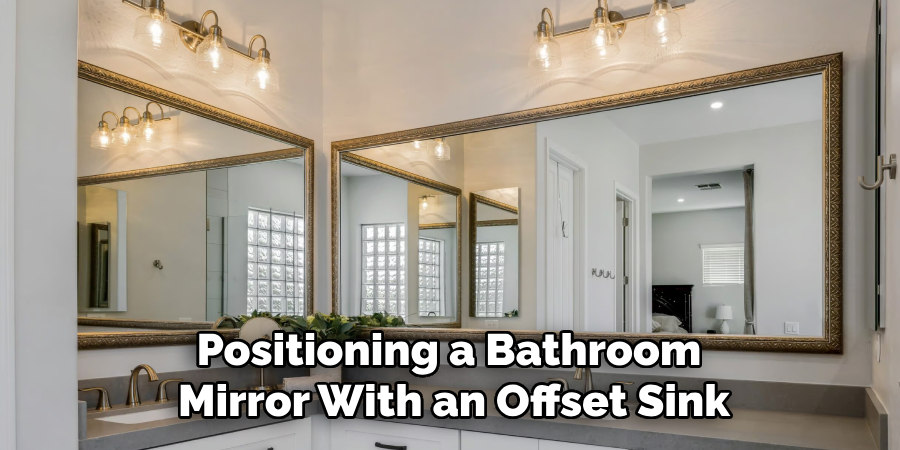
It’s also important to consider the mirror proportions between the sink and vanity. Ideally, the mirror should be appropriately scaled to create a harmonious look, avoiding a disproportionate appearance. A mirror that mimics the width of the sink can provide a cohesive look, while a larger mirror spanning the entire vanity may offer balance and symmetry. By carefully considering these factors, you can select a mirror that enhances your bathroom’s aesthetic and functional aspects.
Mirror Placement Options
Centering the Mirror Above the Vanity
One option for dealing with an offset sink is to center the mirror above the entire vanity rather than directly above the sink. This approach can help create a balanced appearance and visual symmetry, making the bathroom look more cohesive. The overall design remains orderly and aesthetically pleasing by positioning the mirror in the center of the vanity. This is particularly important in bathrooms where harmony and proportion play key roles in the decor.
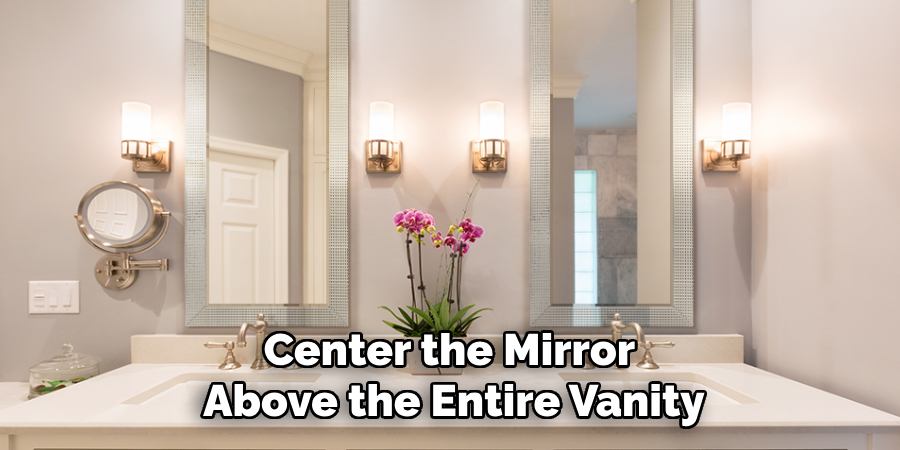
A centrally placed mirror can also enhance the perception of space, making a small bathroom appear larger. However, ensuring that the mirror’s size complements the vanity’s width is essential, avoiding any disproportionate views that could disrupt the bathroom’s visual flow. Ultimately, centering the mirror above the vanity is an excellent strategy to maintain a neat and attractive look while still maximizing our functional mirror space.
Aligning the Mirror with the Sink
For those who prioritize functionality and ease of use, aligning the mirror directly above the offset sink is a practical solution. By placing the mirror directly over the sink, you ensure that it meets your practical grooming needs, facilitating daily tasks like brushing your teeth, washing your face, and applying makeup. This alignment keeps all essential elements—sink, faucet, and mirror—in one vertical axis, ensuring ergonomic convenience.
While this option may sacrifice some visual balance, choosing a mirror with a stylish frame or unique shape can mitigate any aesthetic drawbacks. Furthermore, ensuring that the mirror is adequately sized for the sink helps integrate it seamlessly into the overall bathroom design. This approach allows you to focus on practicality without extensively compromising on the room’s visual appeal, maintaining both functionality and comfort in your daily routines.
Using Multiple Mirrors
Another innovative approach is to use two smaller mirrors to balance the offset created by the sink’s placement. By installing a mirror directly above the sink and another one where the sink would typically be centered, you create visual symmetry and balance in your bathroom design. This method not only addresses the issue of functionality by providing a mirror directly above the sink but also adds a design element that can make the bathroom appear sophisticated and well-thought-out.
Multiple mirrors can also accommodate different users, catering to varying height requirements or preferences without compromising on style. Additionally, the use of two mirrors offers an opportunity to introduce more design elements. For example, identical mirrors with matching frames can enhance cohesion, while distinct or creatively shaped mirrors can add character and a unique touch to the bathroom. This approach leverages both practicality and aesthetic harmony, ensuring a well-rounded and user-friendly bathroom space.
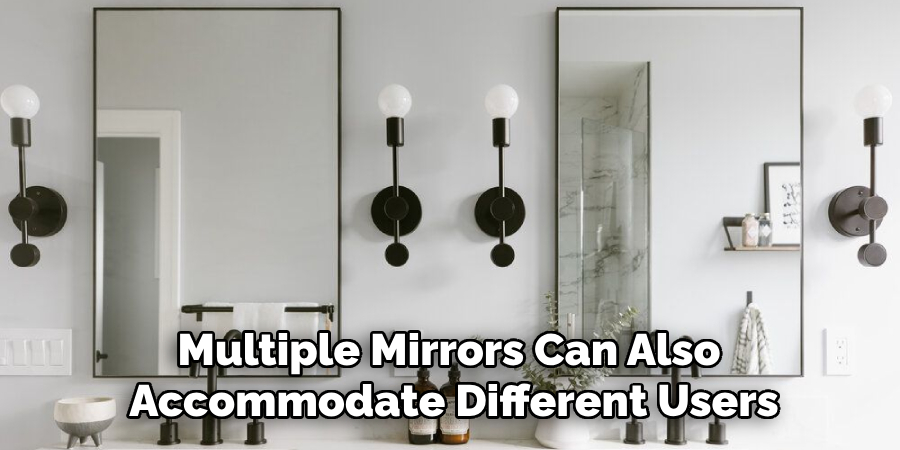
How to Position Bathroom Mirror with Offset Sink: Choosing the Right Mirror Style and Size
Selecting a Mirror Style
Choosing the right mirror style is crucial to achieving a cohesive and polished bathroom design. Frameless mirrors are popular for their sleek and modern look, seamlessly blending into contemporary spaces while making the room feel larger and more open. On the other hand, framed mirrors add a touch of elegance and character, with the frame material and design contributing significantly to the bathroom’s overall aesthetic. Whether it’s rustic wood, elegant metal, or a minimalistic design, the frame can either complement or contrast with existing fixtures and finishes, enhancing the decor.
Decorative mirrors featuring intricate designs, ornate frames, or unique shapes serve as statement pieces that can elevate the visual interest of the bathroom. When selecting a mirror style, consider the existing bathroom decor and fixtures. Ensure that the chosen style aligns with or enhances the design elements already present, creating a harmonious and visually appealing environment.
Determining the Mirror Size
Selecting the appropriate mirror size involves a careful evaluation of the vanity and wall dimensions. Ideally, the mirror should be no wider than the vanity itself, creating a balanced and proportional look. A mirror that matches the width of the vanity enhances cohesion and ensures that the mirror complements rather than overpowers the vanity unit. Alternatively, a larger mirror that spans the entire length of the vanity can provide a more expansive feel and additional reflective surface area, which can be particularly beneficial in smaller bathrooms.
Proportion and scale are essential considerations when determining the mirror size. An oversized mirror can overwhelm the space, while an undersized one may look out of place and insufficient for practical use. To achieve visual harmony, it’s advisable to leave a few inches of space between the mirror’s edge and the vanity’s sides, creating a balanced and framed appearance. Accurate measurements and thoughtful consideration of these factors will ensure that the mirror enhances the bathroom’s functionality and aesthetic appeal.
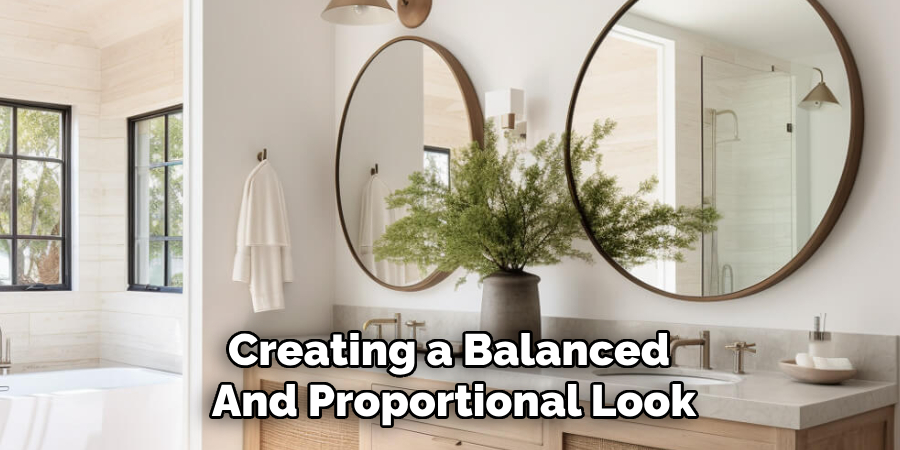
Installing the Mirror
Preparing the Wall
Before beginning the installation process, it’s essential to ensure that the wall is clean, dry, and free of any obstacles. This step will help in achieving a secure and level mounting, preventing potential damage to the mirror or wall. Start by wiping the wall with a damp cloth to remove any dust, dirt, or grease that could interfere with the adhesive or mounting hardware. Allow the wall to dry completely before proceeding.
Next, use a pencil to mark the desired placement of the mirror. Measure the space accurately to ensure that the mirror aligns perfectly with the vanity or sink, as per your chosen design. Use a level to check the alignment of the marked points, ensuring that the mirror will hang straight and even. If mounting on a tiled wall, ensure that the marks fall on grout lines or other easily drillable areas to avoid damaging tiles.
Mounting the Mirror
Choosing the right hardware is crucial to secure the mirror effectively. Depending on the mirror’s weight and the wall type, you may need anchors, screws, or other specialized mounting hardware. For heavier mirrors, ensure that the hardware is rated to support the mirror’s weight and that it is drilled into wall studs for maximum stability.
Begin by drilling pilot holes at the marked points to guide the screws and prevent the wall from cracking. Insert the anchors if needed, then position the mirror against the wall, aligning it with the drilled holes. Have a second person hold the mirror in place while you attach the screws or mounting brackets. Tighten the hardware securely, but avoid overtightening to prevent damaging the mirror frame or wall. Finally, use the level to confirm that the mirror is properly aligned, making any necessary adjustments for a flawless finish.

How to Position Bathroom Mirror with Offset Sink: Additional Design Considerations
Lighting Placement
Positioning lighting fixtures to complement the mirror and sink is essential for both functional and aesthetic purposes. Effective lighting enhances visibility and can dramatically elevate the bathroom’s ambiance. Ideally, lighting should be placed at eye level on either side of the mirror to reduce shadows and provide even illumination for daily tasks like shaving or applying makeup. Sconces are popular, offering focused light that can be adjusted depending on the activity. Alternatively, an overhead light positioned above the mirror can also be effective, especially in smaller bathrooms where side sconces might not be feasible.
When selecting types of lighting, consider a combination of both sconces and overhead lights for layered illumination. This approach improves functionality and contributes to a well-lit and welcoming atmosphere. Dimmable lights can further enhance versatility, allowing users to adjust the brightness to suit different needs, from a bright morning routine to a relaxing evening bath.
Incorporating Storage Solutions
Adding shelves or cabinets around the mirror can significantly enhance the bathroom’s storage capacity without compromising on style. Floating shelves or built-in cabinets surrounding the mirror provide convenient spaces for storing toiletries, cosmetics, and other essentials, keeping the countertop clutter-free. Open shelving can add a modern, airy feel to the bathroom while offering easy access to frequently used items. Conversely, closed cabinets contribute to a cleaner look by concealing clutter, promoting a streamlined and organized environment.
Balancing storage needs with aesthetic considerations is crucial. Choose materials and finishes that complement the existing bathroom decor, ensuring cohesion and visual harmony. For instance, sleek glass shelves can add a contemporary touch, while wooden cabinets can introduce warmth and a rustic charm. Integrating storage solutions thoughtfully enhances the bathroom’s functionality and ensures that every element contributes to an organized, aesthetically pleasing space.
Troubleshooting Common Issues
Dealing with Visual Imbalance
Visual imbalance can detract from a bathroom’s aesthetic appeal. For correcting this, consider incorporating decorative elements such as matching sconces or artwork on either side of the mirror to create symmetry. Symmetrical arrangements enhance visual harmony, especially in small spaces, making the room feel more cohesive and balanced. It’s crucial to ensure that these elements complement the overall bathroom decor to maintain a unified look and prevent visual clutter.
Addressing Functional Concerns
Ensuring the mirror is practical for daily use involves considering its height and accessibility. The mirror should be mounted at a suitable height that accommodates all users, typically centered above the sink. For shared bathrooms, an adjustable or tilting mirror can be beneficial to adapt to different users’ needs. Additionally, making sure the mirror is well-lit and easily accessible will enhance its functionality and user experience, facilitating daily grooming activities efficiently.
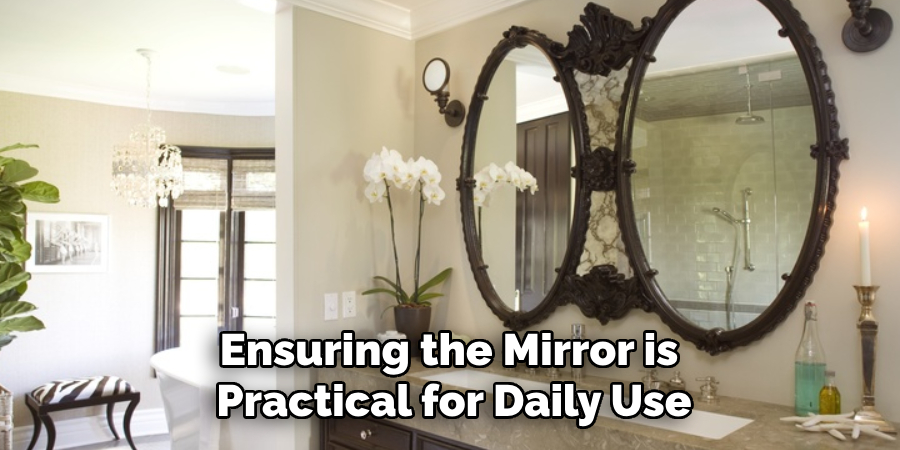
Conclusion
Positioning a bathroom mirror with an offset sink requires careful planning and attention to detail. As highlighted throughout this guide, the key steps include preparing the wall, precisely marking the desired location, and choosing the appropriate mounting hardware to ensure a secure installation. Effective lighting placement and integrating storage solutions can enhance both the functionality and aesthetics of the bathroom. Addressing common issues such as visual imbalance and practical concerns ensures a harmonious and user-friendly space.
Balancing aesthetics and functionality is essential in achieving a well-organized and visually appealing bathroom. Remember, the process of how to position bathroom mirror with offset sink should be customized to fit your specific layout and personal preferences. By following these guidelines and tailoring the solutions to your unique needs, you can create a beautifully coordinated and efficient bathroom environment.

